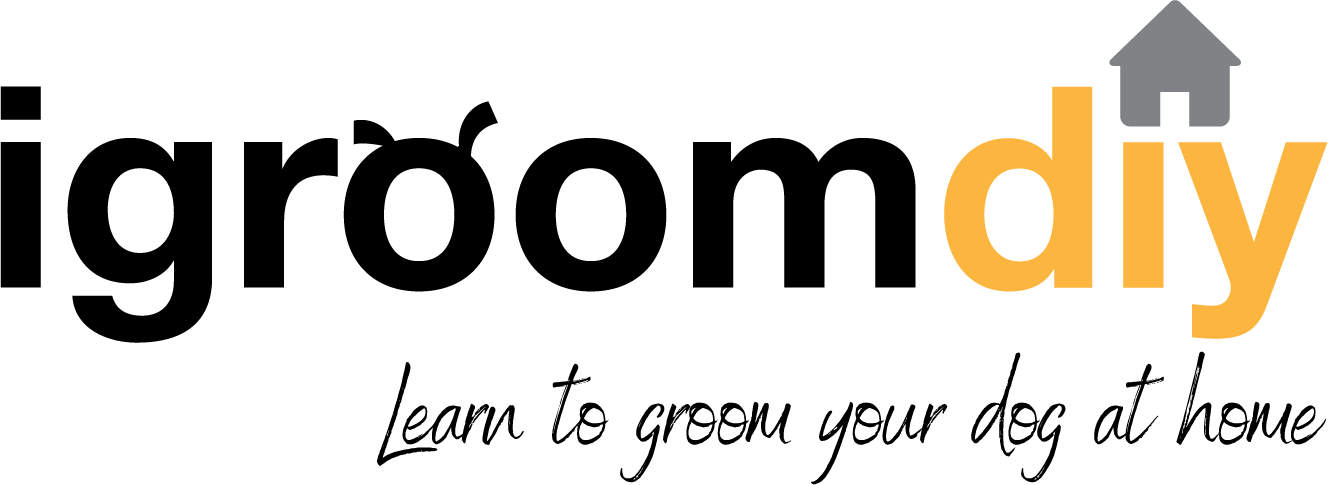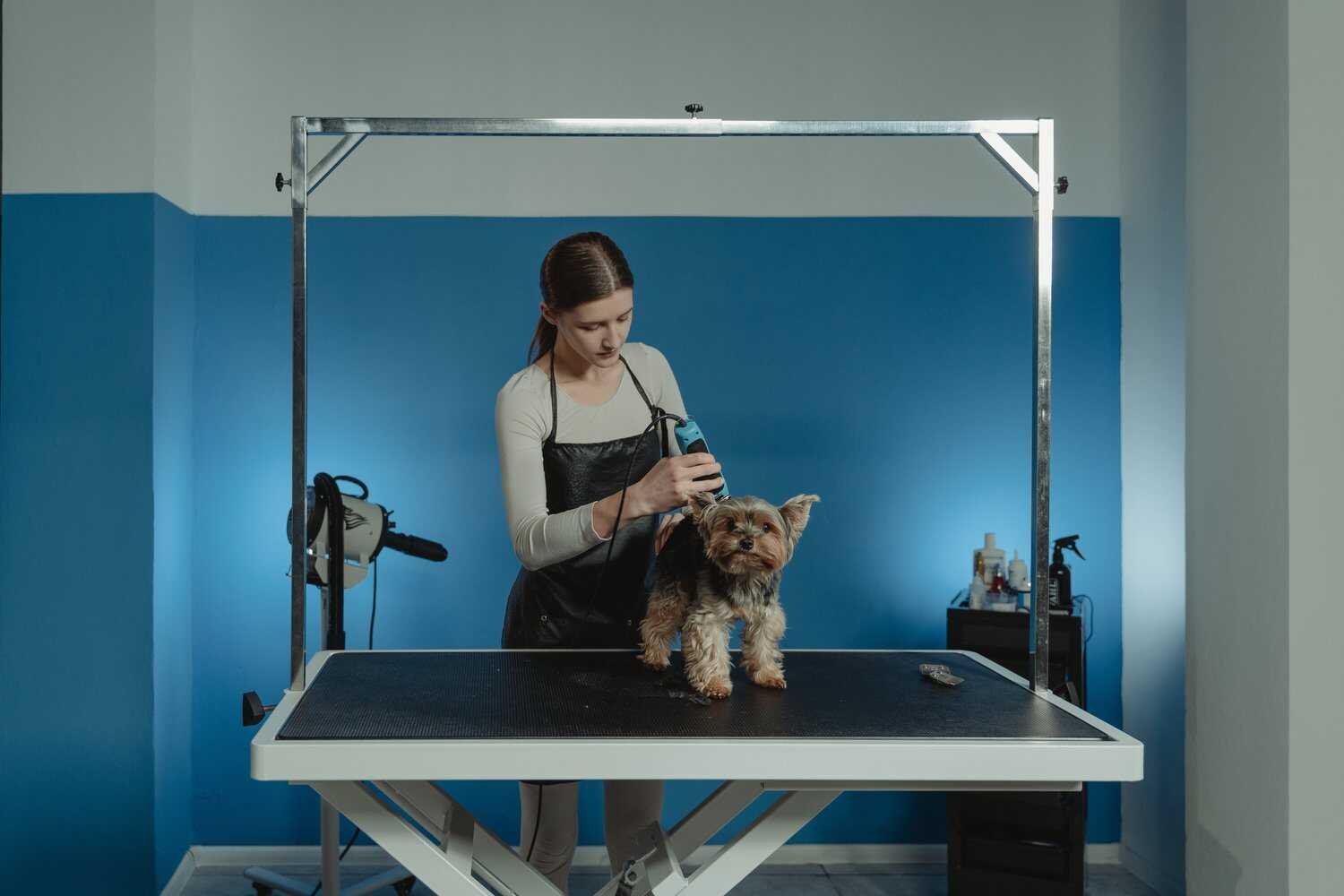Step-by-Step Guide on How to Groom a Dog at Home Like a Pro
If you're looking for budget-friendly ways to keep your dog looking and feeling their best, this guide is for you.
Did you know that over 60% of pet owners in Australia struggle with the high costs of regular grooming salon visits? It can cost upwards of $90 per trim every 6 to 12 weeks. Grooming your dog properly is essential for their health and happiness.
In this blog, we will share simple tips and tricks for transforming your dog at home. We'll cover everything from bathing and blow-drying to nail trims and hygiene checks.
If you’re in the dog grooming business, you should check out our Professional membership with igroomhub and receive valuable mentorship from industry experts to enhance and refine your grooming skills.
The Essentials of Dog Grooming: What You Need to Know
When grooming your dog, it's important to know the essentials. Grooming your dog doesn't just mean bathing them and brushing their fur. It goes beyond that, and understanding the true meaning of grooming is key.
To start, grooming your dog is about maintaining overall health and well-being. It involves caring for their skin, coat, nails, ears, and teeth. But you don't have to be a professional dog groomer to do a lot of the tasks at home safely.
With a few professional dog grooming tips and tricks, you can care for your dog like a pro in your home. Visit igroomhub's online shop for a range of top-quality dog grooming tools, and DIY Home Grooming kits.
Here are some essential dog grooming tips to get you started:
Brushing: Regular brushing keeps your dog's coat looking beautiful and helps remove any tangles or mats that can be uncomfortable for your pup.
Bathing: Use a gentle dog shampoo and conditioner and rinse thoroughly to remove any residue. For best results, use a high velocity dryer or a handheld dryer on low or no heat to fluff dry their coat. For short coated dogs, use a towel and a chamois.
Nail Trimming: Keeping your dog's nails short is essential for their comfort and overall health. Just be careful not to cut too close to the quick. See our detailed tutorial.
Ears and Teeth: Regularly check your dog's ears for signs of infection or buildup, and brush their teeth to prevent dental issues.
Paws and Brushes: How to make Grooming a Dog a Bonding Experience
Now that you know all the essential steps to groom a dog at home, it's time to do it. Not only is grooming an essential part of dog care, but it can also be a bonding experience for both of you.
Here's a step-by-step guide on how to groom your dog:
Prepare the Grooming Area:
Before you start grooming your dog, setting up a dedicated grooming area is essential. This will ensure you and your dog are comfortable throughout the grooming process.
Find a well-lit and spacious area to access all the necessary tools easily.
Lay down a non-slip mat to keep your dog steady and prevent accidents.
Gather all the grooming supplies, such as brushes, combs, towels, and shampoos.
Keep them within arm's reach to avoid any unnecessary interruptions.
Additionally, make sure to have treats nearby as rewards for good behaviour.
Remember, creating a calm and organised environment will make the grooming experience more enjoyable for you and your dog. Nat and Lolly share a great video here about preparing for the bath.
Brush Your Dog’s Coat:
Now that you've set up your grooming area and gathered all the necessary tools, it's time to brush your dog's coat. Brushing your dog regularly is crucial not only for their appearance but also for their overall health and well-being. It helps to remove dirt, dead hair, and tangles, preventing matting and skin issues.
We recommend watching our Pupper Prep videos prior to attempting any brushing or combing on your dog.
Start by gently brushing your dog's coat with the hair growth.
Use a brush suitable for your dog's coat type, whether a slicker brush for long-haired dogs or a bristle brush for short-haired dogs.
Take your time and be gentle, avoiding any sensitive areas.
As you brush, look for any signs of fleas, ticks, or skin abnormalities. If you notice anything unusual, consult your vet for further guidance.
How to Choose the Right Brush for Your Dog?
Choosing the right brush for your dog ensures their coat stays healthy and well-maintained. Here are some tips to help you select the appropriate brush:
Consider Your Dog's Coat Type: Different breeds have varying coat types, such as short, long, curly, or double-coated. Identify your dog's coat type to determine the brush that will work best. For example, slicker brushes are suitable for removing loose hair from long-haired breeds, while bristle brushes work well for short-haired breeds.
Understand Your Grooming Needs: Determine why you are brushing your dog. Is it to detangle mats, remove loose hair, or distribute natural oils? Different brushes serve different purposes. Consider a de-matting tool or a slicker brush with fine teeth for mat removal. A de-shedding tool or an undercoat rake may be more appropriate for shedding control. There are a number of silicon based detangling sprays that can assist detangling.
Test Out Different Brushes: Visit a pet store or consult a professional groomer to try different brush options. Take note of how each brush feels in your hand and how your dog reacts to it. Some dogs prefer softer, while others require firmer bristles for effective grooming. Care must always be taken not to mark the skin or pull heavily on knots.
Consider Maintenance and Durability: Look for easy brushes to clean and maintain. Brushes with removable or self-cleaning features can save time and effort. Opt for brushes made from high-quality materials that will withstand regular use and last longer.
Check and Clean the Ears:
Checking and cleaning your dog's ears is a vital grooming routine. By regularly inspecting your dog's ears, you can catch any potential issues early on and prevent discomfort or infection.
Start by gently lifting your dog's ear flap and inspecting the outer part of the ear for any signs of redness, swelling, or discharge. If you notice any of these symptoms or your dog seems in discomfort, it's essential to consult your vet for further evaluation. Often a dog with infected ears has a canker like smell.
Use a dog-specific ear-cleaning solution and a cotton ball or pad to clean your dog's ears. If the ear looks red or infected, do not touch it, Veterinary attention will be needed.
Saturate the cotton ball with the ear cleaner and gently wipe the outer part of the ear.
Avoid inserting anything into the ear canal, as this can cause damage.
Consult your vet if you need help cleaning your dog's ears properly.
Regularly checking and cleaning your dog's ears promotes good hygiene and helps maintain their overall health and well-being. So, don't forget to include this critical step in your at-home grooming routine.
Trim Nails:
Trimming your dog's nails is an integral part of their grooming routine. Overgrown nails can cause discomfort, pain and even lead to injury, so keeping them properly maintained is essential. Many dogs do not like trimming their nails, so it's necessary to approach this task with patience and care. We strongly recommend watching this video prior to attempting a nail trim.
Start by gathering all the necessary tools: a pair of dog nail clippers and styptic powder in case of any accidental cuts. Find a quiet and well-lit area to work in, and make sure your dog is calm and relaxed before starting.
Hold your dog's paw gently but firmly, and examine the nails for the quick, which is the pink part inside the nail. Be cautious not to cut into the quick, as it can cause bleeding and pain.
Trim the nails slowly and in small increments. Aim to remove only the sharp tips, as cutting too much can be painful for your dog. If your dog becomes anxious or stressed, take a break and try again later.
With patience and positive reinforcement, your dog will gradually become more comfortable with nail trimming.
Bathe Your Dog:
After trimming nails, it's time to move on to the bath. Bathing your dog keeps them clean and helps remove dirt, odours, and allergens from their skin and fur.
Here are some tips for a successful bath time:
Start by filling the tub with warm water. Ensure it's not too hot or cold for your dog's comfort.
Wet your dog's coat thoroughly, ensuring all areas are wet, including the belly, legs, and tail. Be mindful not to get water in the dogs ears, nose or mouth.
Use a gentle, gentle, and suitable dog-specific shampoo for your dog's skin and coat type. Apply the shampoo and lather it all over your dog's body.
Take care to avoid getting shampoo in your dog's eyes, ears, and mouth. Use a damp cloth to clean their face, if necessary, gently. Wash your dog twice with shampoo.
Rinse your dog thoroughly, ensuring all shampoo is completely washed out of their coat.
Apply conditioner to the coat and rinse off thoroughly.
Towel dry your dog, removing as much moisture as possible. You can also use a hairdryer on a low setting if your dog is comfortable with the noise and sensation.
Don't forget to give your dog lots of praise and treats for their cooperation during the bath.
Remember, bath time can be a bonding experience between you and your dog, so make it a positive and enjoyable experience for both of you. Watch Nat bath Lolly at home in the kitchen sink here.
Brush Teeth:
Maintaining your dog's oral hygiene is just as important as the rest of their grooming routine. Regularly brushing your dog's teeth helps prevent plaque buildup, tartar, and bad breath. Plus, it keeps their pearly whites shining bright!
To start, use a toothbrush and toothpaste specifically designed for dogs.
Never use human toothpaste, as it can harm your dog.
Gently lift your dog's lips and brush their teeth using small circular motions.
Aim to brush all the teeth, including the hard-to-reach back ones.
If your dog is not used to teeth brushing, introduce it gradually.
Start with short brushing sessions and gradually increase the time as they become more comfortable. Always provide lots of praise and rewards to make it a positive experience.
If your dog isn't a fan of toothbrushes, alternatives are available. Dental wipes or sprays can also help keep their teeth clean and fresh.
Regular dental care is vital to your dog's overall health and well-being. So, in your at-home grooming routine, include tooth brushing to brighten your dog's smile!
Scissoring Hair:
Is your dog starting to resemble a mini Chewbacca? While it might be tempting to grab a pair of scissors and start trimming, it's crucial to understand that scissoring and clipping your dog's hair is not a simple task. It requires in-depth study, commitment, and a mastery of skills that cannot be underestimated to ensure your dog is not seriously injured.
Scissoring and clipping involve much more than just cutting hair. You need to be adept in handling your dog, know the right equipment to use where, and possess the skill to do it safely. Without proper guidance and training, there's a real risk of accidentally harming your dog, especially when working around sensitive areas like the eyes, groin, bottom, underarms, flank, hock and paws.
There is no doubt that trimming your dog's hair improves their appearance but also helps keep them cool and prevents matting. Plus, it's an opportunity to show off your grooming skills!
Start by gathering the necessary tools: a pair of dog grooming scissors (scissors must be sharp, they can be curved, straight or you can use thinning shears) and a comb.
Ensure you have in depth knowledge about the danger points on the dog, ie areas where there is loose skin that can be easily nicked, cut or split with scissors or clippers. Do not attempt any hair cutting or trimming without this knowledge.
Find a quiet and well-lit area to work in, ensuring your dog is relaxed and comfortable.
Gently comb through your dog's coat, separating any tangles or mats.
Follow the guidelines for trimming your dog according to the course or tutorial you are using.
Remember to be extra cautious around sensitive areas like the face, ears, groin, bottom, underarms, flank, hock and paws.
You can use your comb to protect these areas while trimming.
Step back regularly to assess their overall appearance as you work through your dog's coat. For detailed scissoring tutorials, sign up for our online DIY Grooming Course, or grab a Student Membership to igroomhub.
Once you've finished, gently brush your dog to remove loose hairs. Admire your handiwork, and remember to reward your dog with lots of praise and maybe a special treat for being so patient!
Now your dog looks dapper and ready to take on the world with their fresh haircut. Well, you're done, congratulations!
For tasks like eye trimming and general foot trimming with scissors, professional training is not just recommended; it's essential. Our DIY Grooming Course offers comprehensive guidance and tutorials. This course will give you the necessary knowledge and skills to groom your dog safely and effectively.
Reward and Praise:
After completing each step of the grooming process, it's time to reward your dog with lots of praise and treats! Let them know how proud you are of their cooperation and good behaviour.
Give them a big pat on the head and say "Good job!" in a cheerful voice. Dogs thrive on positive reinforcement, so the more enthusiastic you are, the happier they will be.
And don't forget the treats! Have some of their favourite treats to reward them for their patience throughout the grooming session.
Offer them a tasty treat and shower them with affection to let them know they did a fantastic job.
Remember, grooming can be a tiring and sometimes stressful experience for dogs, so it's essential to make it a positive and rewarding one. Praising and rewarding your dog will reinforce their good behaviour and make future grooming sessions even easier.
So, celebrate the completion of the grooming session with your dog and show them just how much you appreciate their cooperation. They'll wag their tail joyfully and be ready to tackle any grooming session like a true pro!
Pro Pups: Unlocking the Best Professional Dog Grooming Tips
Professional dog grooming requires skill, knowledge, and attention to detail. Here are some tips to demonstrate the difference in equipment and why professional dog groomers invest:
Proper Equipment:
When it comes to professional dog grooming, having the proper equipment is essential. Like a chef needs knives, a dog groomer needs the tools to work magic.
So, what exactly do you need?
First and foremost, a good set of clippers is a must-have. Look for clippers designed for dog grooming, as they have the power and precision to do the job.
Next, you'll need a variety of grooming brushes and combs. Different breeds have different coat types, so having the right tools for each is essential.
Investing in high-quality equipment may seem like a splurge, but for Professional Dog Groomers it's worth every penny. It not only makes their job easier, but also ensures the comfort and safety of your dog with them.
Breed-Specific Knowledge:
To truly excel in professional dog grooming, it's crucial to have a solid understanding of breed-specific knowledge.
Every breed has its own unique characteristics and grooming requirements.
For example, a Poodle may need intricate clipping techniques to maintain its stylish look, while a Labrador Retriever may require regular brushing to manage shedding. Knowing these specifics will not only help you provide the best grooming services, but it will also ensure the comfort and well-being of each dog.
Stay up-to-date with industry trends and attend grooming workshops to expand your breed-specific knowledge and skills continually. Your expertise will shine through, and dogs and their owners will appreciate the personalised care you provide.
Pre-Grooming Assessment:
Before diving into the grooming process, conducting a thorough pre-grooming assessment is essential. This involves checking for any signs of skin issues, such as redness or irritation, and any lumps or bumps that must be addressed.
Examining the dog's coat to determine its texture and condition is essential. This will help guide the grooming techniques and products best suited to the dog.
Additionally, a pre-grooming assessment allows for a visual inspection of the dog's ears, teeth, and nails, ensuring that any necessary cleaning or trimming can be included in the grooming session. Pay particular attention to any areas of the dog that feel hot to touch, your dog may have an injury. Be mindful of lumps and bumps often hidden in the hair.
Pro Tip! Want to take your dog grooming business to new heights? Dive into the essentials with igroombiz. Explore our treasure trove of educational resources that unveil essential strategies for running a successful dog grooming business.
Gentle Handling:
Ensuring gentle handling is crucial when it comes to professional dog grooming. Dogs can quickly become anxious or stressed during grooming, so creating a calm and relaxing environment is essential.
Using a soft, soothing voice and gentle touches, groomers can help put dogs at ease. It's also important to be aware of a dog's body language, which can indicate their comfort level. Taking breaks and providing positive reinforcement can further promote safety and trust.
Another aspect of gentle handling involves using the right tools and techniques. Using sharp and well-maintained grooming tools can help minimise discomfort and potential harm to the dog. Additionally, learning and practising proper grooming techniques can ensure the process is as pain-free as possible.
Proper Bathing Techniques:
Proper bathing techniques are crucial for keeping your dog clean and healthy.
Begin by thoroughly wetting your dog's coat with warm water, ensuring all areas are soaked.
Apply a gentle dog shampoo, working it into a rich lather, and pay extra attention to areas prone to odour and dirt buildup.
Don't get water or soap in your dog's eyes or ears.
Use a damp cloth to clean their face gently, mindful of their delicate features.
Rinse thoroughly, making sure all the shampoo is removed, then repeat this process.
Use a conditioner to rehydrate the hair and skin of your dog, rinse thoroughly.
When drying your pup, use a soft towel to absorb excess moisture, being careful not to rub too vigorously. Keep this dryer moving.
If using a hair dryer, set it on the lowest heat setting and keep it at a safe distance to prevent burns.
Remember, bathing too frequently can strip your dog's coat of natural oils, so aim for a bath every 4–6 weeks unless otherwise recommended by your vet.
Why Professional Grooming Matters for Your Canine Companion
Ensuring your dog receives regular professional grooming is essential for their overall health and well-being.
Professional groomers have the knowledge and expertise to properly clean and maintain your dog's coat, nails, and ears, preventing potential issues such as matting, infections, and ingrown nails.
In fact, studies have shown that dogs who receive regular professional grooming are less likely to develop skin irritations and other health problems. Additionally, professional groomers can spot early signs of potential health issues, such as lumps or skin abnormalities, which a vet can address.
Investing in professional grooming for your dog keeps them looking and smelling their best and helps keep them happy and healthy for years.
So why wait? Please take advantage of the Australia’s #1 online dog grooming education resource, igroomhub, and give your dog the care they deserve.
Unleash Your Grooming Superpowers at Home - Join Us
At igroomhub, we're all about unleashing your grooming superpowers! Whether you're a passionate DIY-er, just dipping your toes into the grooming world, or an established business, we've got you covered.
Our platform is designed to cater to everyone, students, professional groomers and pupper parents. From brushing techniques to nail-trimming tricks, we have everything you need to ensure pups look and feel their best.
You will save money by grooming your dog at home and develop a deeper bond with your canine companion as you care for their grooming needs. So why not join us at igroomhub and unleash your grooming superpowers? Let's make grooming a fun and rewarding experience for you and your dog!
Frequently Asked Questions About How to Groom a Dog
How do you groom a dog for beginners?
Grooming a dog for beginners involves several steps.
Start by brushing their coat to remove any tangles or mats.
Then, trim their nails carefully using dog nail clippers.
Clean their ears with a gentle dog ear cleaner and cotton balls.
Finally, give them a bath using dog-friendly shampoo and conditioner, rinse them, and dry them thoroughly afterwards.
Remember to be patient and take breaks if needed!
What are the 7 steps of grooming a dog?
The 7 steps of How to Groom a Dog include
Assessing the dog
Bathing and drying
Nail clipping
Hygiene clipping
Clipping the body
Styling with scissors and thinning shears
Loving your work, and praising your dog!
Following these steps regularly will help keep your dog clean and healthy.
How can I trim my dog's hair at home?
Trimming your dog's hair at home can be done with the right tools and techniques. It is strongly recommended that you undertake some kind of formal study though, prior to attempting this. There are several salons across Australia that offer short classes on dog grooming for owners (like this one in Melbourne), or igroomhub offers a comprehensive online DIY course for mixed breed grooming at home.
Start by using clippers with a guard to trim their body hair, following the direction of hair growth.
Use scissors to trim longer hair on their face, furnishings, ears, and paws.
Be careful around sensitive areas and always work slowly to avoid accidents.
If in doubt, stop! Ring your groomer and make an appointment.
What is essential dog grooming?
Essential dog grooming involves regular brushing to remove loose hair and prevent mats, trimming their nails to a proper length, cleaning their ears to avoid infections, and bathing them to keep their coat clean and skin healthy. Additionally, brushing their teeth regularly and checking for any abnormalities on their skin are essential aspects of basic dog grooming.
What do dog groomers do first?
When grooming a dog, professional groomers usually start by assessing the dog's overall health and coat condition. They will then brush the dog's coat to remove tangles or mats, and bath and dry the dog. Next, they clean the dog's ears and trim their nails. After that, they may perform any additional services the owner requests, such as trimming their hair or giving them a specific haircut.
Which dogs need grooming?
All dogs, regardless of breed or size, require some grooming. However, dogs with longer coats, such as Shih Tzus or Poodles, may require more frequent grooming sessions to prevent matting and keep their coats in good condition. Dogs with floppy ears, like Cocker Spaniels, may also need regular ear cleaning to prevent infections.
CHECK OUT OUR HOME GROOMING KITS











